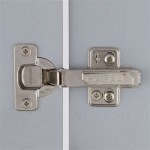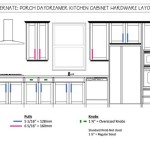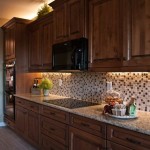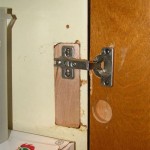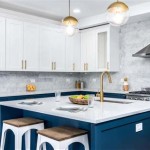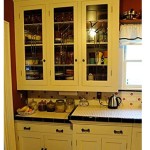White Shaker RTA Kitchen Cabinets: A Comprehensive Overview
White shaker RTA (Ready-To-Assemble) kitchen cabinets have become a ubiquitous choice for homeowners seeking a blend of classic aesthetics and cost-effectiveness. Their popularity stems from a combination of factors, including their timeless design, versatility, affordability, and the convenience of self-assembly. This article will delve into the various aspects of white shaker RTA kitchen cabinets, exploring their design features, material options, assembly process, benefits, and potential drawbacks.
The shaker style itself is characterized by its clean lines and minimalist design. This aesthetic originated with the Shaker religious sect, who emphasized simplicity, functionality, and quality craftsmanship. Shaker cabinets typically feature a five-piece door construction, consisting of a flat center panel surrounded by a frame. This frame usually has a simple, squared-off edge, contributing to the overall understated elegance. The white finish further enhances the clean and bright appearance, making these cabinets suitable for a wide range of kitchen styles, from traditional to contemporary.
RTA cabinets are manufactured in a disassembled state and shipped flat-packed to the customer. This approach reduces shipping costs and allows for more efficient warehousing and handling. Upon delivery, the homeowner or a contractor is responsible for assembling the cabinets according to the manufacturer's instructions. While the assembly process requires some effort, it can result in significant cost savings compared to pre-assembled or custom-built cabinets.
Key Aspects of White Shaker RTA Kitchen Cabinets
Several key factors contribute to the appeal and functionality of white shaker RTA kitchen cabinets. These include the design's adaptability, the range of available materials, and the inherent cost advantages associated with the RTA format.
Design Versatility and Timeless Appeal
The primary advantage of white shaker cabinets lies in their design versatility. The neutral white color and simple lines allow them to seamlessly integrate into various kitchen designs. They can be paired with a wide array of countertop materials, backsplash tiles, and hardware finishes. For instance, they complement granite, quartz, marble, and even butcher block countertops equally well. Similarly, they can be accented with stainless steel, brushed nickel, oil-rubbed bronze, or even bold-colored hardware, allowing for customization to suit individual tastes and preferences.
Furthermore, the shaker style transcends trends, ensuring that the kitchen remains aesthetically pleasing for years to come. Unlike more elaborate or ornate cabinet designs that may quickly become dated, the simplicity of shaker cabinets provides enduring appeal. This timeless quality makes them a safe and reliable choice for homeowners who prioritize long-term value and visual consistency.
White cabinets also have the effect of brightening a kitchen space. The reflective quality of white paint helps to maximize natural light and create a feeling of openness. This is particularly beneficial in smaller kitchens or those with limited natural light sources. The bright, clean look of white shaker cabinets contributes to a more inviting and functional kitchen environment.
Material Options and Durability
White shaker RTA cabinets are available in a variety of materials, each offering different levels of durability, cost, and aesthetic appeal. Some of the most common materials include solid wood, plywood, MDF (Medium-Density Fiberboard), and particleboard.
Solid wood cabinets, typically made from hardwoods like maple, oak, or birch, are considered the most durable and high-quality option. They offer superior resistance to dents, scratches, and moisture damage. Solid wood cabinets also have a natural beauty and warmth that is difficult to replicate with other materials. However, they are typically the most expensive option.
Plywood is another popular choice for cabinet construction. It is made by layering thin sheets of wood veneer and bonding them together with adhesive. Plywood offers good strength and stability, and it is less prone to warping or cracking than solid wood. It is also generally more affordable than solid wood.
MDF is an engineered wood product made from wood fibers and resin. It is denser and more uniform than particleboard, making it a good choice for cabinet doors and drawer fronts. MDF provides a smooth, paintable surface and is resistant to warping. However, it is more susceptible to moisture damage than solid wood or plywood.
Particleboard is the least expensive option. It is made from wood chips and resin, and it is not as strong or durable as solid wood, plywood, or MDF. Particleboard is prone to moisture damage and should be used with caution in areas that are likely to get wet. It is typically used for cabinet boxes and shelves rather than doors or drawer fronts.
The finish on the cabinet is also a crucial factor in its durability and appearance. Painted finishes, especially those with multiple coats and a protective topcoat, offer good resistance to scratches and stains. Thermofoil finishes, which are applied by heat-sealing a layer of vinyl onto the MDF core, are also durable and easy to clean.
Cost-Effectiveness and Assembly Considerations
The RTA format is a major factor in the affordability of these cabinets. Because they are shipped disassembled, the manufacturer saves on labor costs associated with assembly and shipping. These savings are then passed on to the customer.
The assembly process itself is typically straightforward, although it does require some basic carpentry skills and tools. Most RTA cabinets come with detailed instructions and all the necessary hardware. However, some homeowners may prefer to hire a professional installer to ensure proper assembly and alignment. The cost of professional installation should be factored into the overall budget.
While the initial cost of RTA cabinets is generally lower than that of pre-assembled or custom cabinets, it is important to consider the time and effort required for assembly. If a homeowner lacks the necessary skills or time, the cost savings may be offset by the cost of professional installation. Furthermore, it is essential to carefully inspect all components upon delivery to ensure that they are free from damage and that all necessary hardware is included. Any missing or damaged parts should be reported to the manufacturer or supplier immediately.
The long-term cost-effectiveness of RTA cabinets also depends on the quality of the materials and construction. Inferior materials or poor construction can lead to premature wear and tear, requiring repairs or replacements in the future. Therefore, it is important to choose RTA cabinets from a reputable manufacturer and to opt for higher-quality materials whenever possible.
Benefits of Choosing White Shaker RTA Kitchen Cabinets
Beyond the core aspects discussed, white shaker RTA kitchen cabinets offer numerous specific benefits that solidify their appeal to a broad range of homeowners.
Adaptability to Various Kitchen Layouts
The modular nature of RTA cabinets makes them highly adaptable to various kitchen layouts. They are available in a wide range of sizes and configurations, allowing homeowners to create a customized kitchen design that meets their specific needs and preferences. This adaptability is particularly beneficial in kitchens with unusual dimensions or challenging architectural features.
Base cabinets, wall cabinets, and specialty cabinets such as pantry cabinets, corner cabinets, and appliance garages are all available in the RTA format. This comprehensive selection allows for the creation of a highly functional and aesthetically pleasing kitchen space. Furthermore, the ability to mix and match different cabinet sizes and styles allows for a high degree of personalization.
Easy Customization and Upgrades
White shaker cabinets provide a blank canvas for customization. They can be easily painted or stained to match any desired color scheme. This allows homeowners to update their kitchen's appearance without having to replace the entire cabinet system. Furthermore, the simple design of shaker cabinets makes it easy to add decorative hardware, such as knobs, pulls, and handles, to further personalize the look.
Upgrading existing white shaker cabinets is also a relatively straightforward process. New doors and drawer fronts can be purchased to replace outdated or damaged ones. Adding new hardware or installing under-cabinet lighting can also significantly enhance the look and functionality of the kitchen.
Increased Home Value
A well-designed and functional kitchen is a major selling point for any home. Upgrading to white shaker cabinets can significantly increase the value of a property. The clean, modern look and the durability of the cabinets make them an attractive feature for potential buyers. Furthermore, a kitchen with ample storage space and efficient layout is highly desirable.
Even if a homeowner is not planning to sell their home in the near future, upgrading to white shaker cabinets can improve their quality of life. A well-designed kitchen makes cooking and entertaining more enjoyable, and it can become the heart of the home.
Potential Drawbacks to Consider
While white shaker RTA cabinets offer many advantages, it's crucial to acknowledge potential drawbacks to ensure a well-informed decision.
Assembly Time and Potential for Errors
The assembly process can be time-consuming, especially for those with limited carpentry experience. It is important to allocate sufficient time for assembly and to carefully follow the manufacturer's instructions. Rushing the assembly process can lead to errors, such as misaligned doors or drawers, which can affect the overall appearance and functionality of the cabinets.
For those who are not comfortable with assembling the cabinets themselves, hiring a professional installer is recommended. While this will add to the overall cost, it can ensure that the cabinets are properly assembled and installed, minimizing the risk of errors and ensuring a professional-looking finish.
Quality Variations Among Manufacturers
The quality of RTA cabinets can vary significantly among manufacturers. It is important to research different brands and to read reviews before making a purchase. Some manufacturers may use inferior materials or construction techniques, resulting in cabinets that are less durable and prone to damage. Opting for reputable brands with established track records of quality and customer satisfaction is advisable.
Paying attention to the details of the cabinet construction, such as the thickness of the plywood or MDF and the quality of the hardware, can help to assess the overall quality of the cabinets. Requesting samples of the materials can also provide a better understanding of the quality and finish.
Potential for Damage During Shipping
Because RTA cabinets are shipped disassembled, there is a risk of damage during transit. It is important to carefully inspect all components upon delivery and to report any damage to the manufacturer or supplier immediately. Taking photographs of any damage can be helpful in filing a claim.
Choosing a supplier with a good reputation for packaging and shipping can help to minimize the risk of damage during transit. Insuring the shipment can also provide financial protection in case of loss or damage.

Aspen White Shaker Ready To Assemble Kitchen Cabinets The Rta

Elegant White Shaker 30 X 18 Wall Cabinet Rta

Brilliant White Shaker Ready To Assemble Kitchen Cabinets The Rta

White Shaker Rta Cabinets Cabinet City Kitchen And Bath

Whole Colorado White Shaker Rta Kitchen Cabinets Kena Woodworking

Rta Shaker Cabinets Style For

Victoria White Shaker 10ft Run Rta Kitchen

White Shaker Elite Rta Kitchen Cabinets Cabinet Showroom

Considering White Shaker Cabinets For Your Kitchen Remodel Discount Rta At Whole S Captcabinets

Aspen White Shaker Ready To Assemble Kitchen Cabinets The Rta
Related Posts


